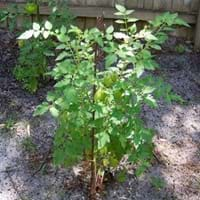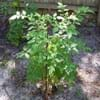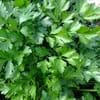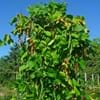Life Span
Annual and Perennial
Perennial
Origin
Mexico, Central America, South America
Europe, Northern Africa, Western Asia
Types
Cherry tomato, Beefsteak tomato, Medium tomato
A. campestre var. campestre - downy fruit
A. campestre var. leiocarpum (Opiz) Wallr. (syn. A. campestre subsp. leiocarpum) - hairless fruit
Number of Varieties
Not Available
Habitat
Loamy soils
Forest margins, gardens, Suburban areas, Woods
USDA Hardiness Zone
11-15
5-8
Sunset Zone
A1, A2, A3, H1, H2, 1a, 1b, 2a, 2b, 3a, 3b, 4, 5, 6, 7, 8, 9, 10, 11, 12, 13, 14, 15, 16, 17, 18, 19, 20, 21, 22, 23, 24
2a, 2b, 3a, 3b, 4, 5, 6, 7, 8, 9, 14, 15, 16, 17
Habit
Vining/Climbing
Oval or Rounded
Flower Color
Yellow
Green, Light Yellow
Flower Color Modifier
Bicolor
Bicolor
Fruit Color
Purple, Burgundy, Plum
Light Yellow, Light Pink, Light Green, Tan
Leaf Color in Spring
Green, Dark Green
Green, Light Green
Leaf Color in Summer
Green, Dark Green
Dark Green
Leaf Color in Fall
Green, Dark Green
Yellow, Gold, Tan
Leaf Color in Winter
Green, Dark Green
Not Available
Leaf Shape
Bell Shaped
Maple shaped
Plant Season
Spring, Summer, Fall
Spring, Summer, Fall
Sunlight
Full Sun
Full Sun, Partial Sun
Type of Soil
Loam, Sand
Clay, Loam, Sand
The pH of Soil
Neutral
Acidic, Neutral, Alkaline
Soil Drainage
Well drained
Average
Bloom Time
Indeterminate
Early Spring
Tolerances
Drought
Pollution, Soil Compaction
Where to Plant?
Container, Ground, Pot
Ground
How to Plant?
Seedlings, Transplanting
Grafting, Seedlings, Transplanting
Plant Maintenance
Medium
Medium
Watering Requirements
Average Water Needs
Needs watering once a week, Requires watering in the growing season
In Summer
Lots of watering
Lots of watering
In Spring
Moderate
Moderate
In Winter
Average Water
Average Water
Soil pH
Neutral
Acidic, Neutral, Alkaline
Soil Type
Loam, Sand
Clay, Loam, Sand
Soil Drainage Capacity
Well drained
Average
Sun Exposure
Full Sun
Full Sun, Partial Sun
Pruning
Remove damaged leaves, Remove dead branches, Remove dead leaves, Remove short branches, Remove short twigs
Prune if you want to improve plant shape, Prune in winter, Prune to stimulate growth, Remove damaged leaves, Remove dead leaves, Remove deadheads
Fertilizers
Apply 5-10-5 amounts
All-Purpose Liquid Fertilizer
Pests and Diseases
Red blotch
Fungal Diseases
Plant Tolerance
Drought
Drought
Flower Petal Number
Single
Single
Fragrant Bark/Stem
Yes
No
Foliage Texture
Medium
Medium
Foliage Sheen
Matte
Glossy
Attracts
Aphids, Bees, Butterflies, Mosquitos
Not Available
Allergy
Itchiness, Nausea, Runny nose, sneezing, Vomiting
Asthma
Aesthetic Uses
Not Available
Showy Purposes
Beauty Benefits
Not Available
Not Available
Environmental Uses
Air purification
Air purification
Medicinal Uses
Not Available
Sore Eyes
Part of Plant Used
Fruits
Bark, Sap
Other Uses
Canning, Sauces
Grown for shade, Used in Furniture, Used in making musical instruments
Used As Indoor Plant
Insignificant
No
Used As Outdoor Plant
Yes
Yes
Garden Design
Container, Edible, Herb, Vegetable, Vine
Feature Plant, Hedges, Screening / Wind Break, Shade Trees
Botanical Name
LYCOPERSICON esculentum 'Ukrainian Purple'
ACER campestre
Common Name
Plum Tomato, Tomato, Ukrainian Purple Tomato
Field Maple, Hedge Maple
In Hindi
बेर टमाटर
फील्ड मेपल
In German
Eiertomate
Feld-Ahorn
In French
Plum Tomato
Maple terrain
In Spanish
Tomate ciruela
arce de campo
In Greek
Plum ντομάτα
Το πεδίο Maple
In Portuguese
tomate ameixa
bordo de campo
In Polish
Plum Tomato
Klon polny
In Latin
Augue Nullam consectetur
Field Maple
Phylum
Anthophyta
Magnoliophyta
Class
Magnoliopsida
Magnoliopsida
Order
Solanales
Sapindales
Family
Solanaceae
Aceraceae
Clade
Angiosperms, Asterids, Eudicots
Angiosperms, Eudicots, Rosids
Tribe
Not Available
Not Available
Subfamily
Not Available
Hippocastanoideae
Importance of Plum Tomato and Field Maple
Want to have the most appropriate plant for your garden? You might want to know the importance of Plum Tomato and Field Maple. Basically, these two plants vary in many aspects. Compare Plum Tomato and Field Maple as they differ in many characteristics such as their life, care, benefits, facts, etc. Every gardener must at least have the slightest clue about the plants he wants to plant in his garden. Compare their benefits, which differ in many ways like facts and uses. The medicinal use of Plum Tomato is Not Available whereas of Field Maple is Sore Eyes. Plum Tomato has beauty benefits as follows: Not Available while Field Maple has beauty benefits as follows: Not Available.
Compare Facts of Plum Tomato vs Field Maple
How to choose the best garden plant for your garden depending upon its facts? Here garden plant comparison will help you to solve this query. Compare the facts of Plum Tomato vs Field Maple and know which one to choose. As garden plants have benefits and other uses, allergy is also a major drawback of plants for some people. Allergic reactions of Plum Tomato are Itchiness, Nausea, Runny nose, sneezing and Vomiting whereas of Field Maple have Asthma respectively. Having a fruit bearing plant in your garden can be a plus point of your garden. Plum Tomato has showy fruits and Field Maple has showy fruits. Also Plum Tomato is not flowering and Field Maple is not flowering . You can compare Plum Tomato and Field Maple facts and facts of other plants too.





